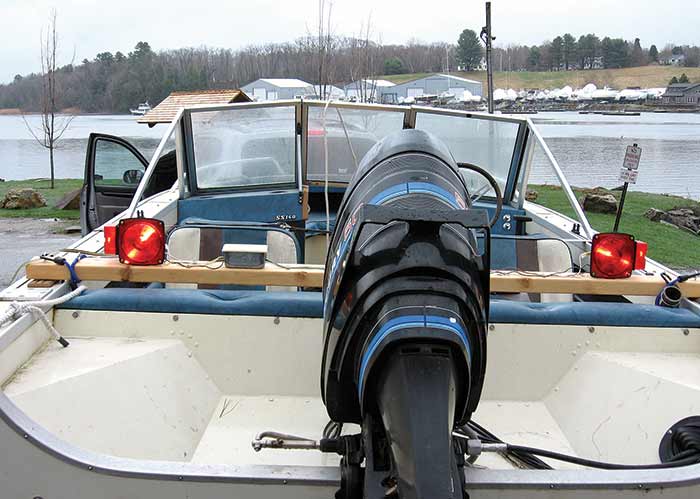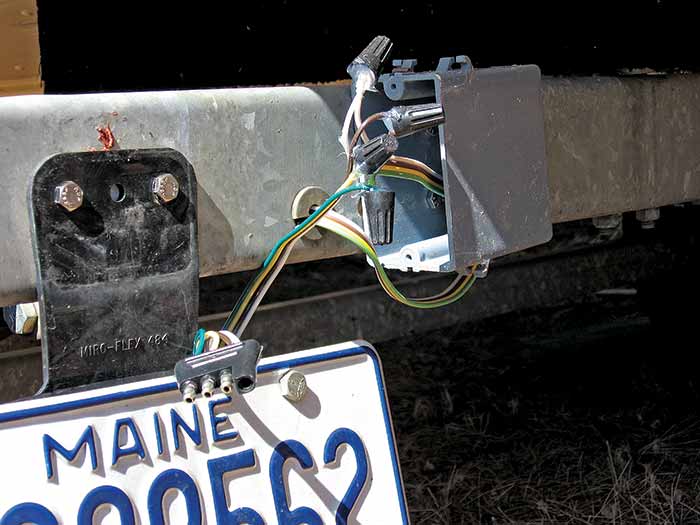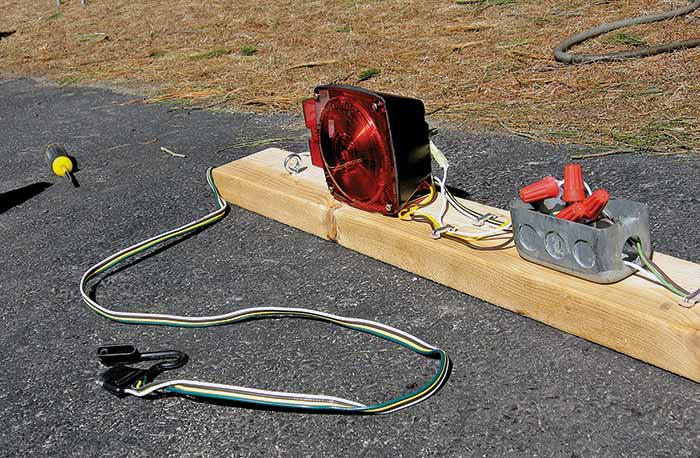Advertisement
Now here's a foolproof, fairly simple way to make sure your salty trailer always has working lights.

A light bar gets your trailer lights up where other motorists can see them, and they never get dunked. Always check and comply with all local and federal laws. (Photo: Tux Turkel)
If your boat's on a trailer — especially an aging one — chances are you have light problems. You try to avoid trouble, of course. You check connections and coat stuff with grease. But you still can't count on all your lights working, all the time. Especially if you boat in saltwater.
Here's a bright idea: Build a light bar — a portable, trailer lighting system mounted to a length of wood. You attach it to your boat for travel, remove it when dunking the trailer, and store it when you get to the ramp and back home. With proper design, a good light bar is a low-cost solution that will perform reliably for the life of your boat.
Before You Start
Everyone's boat and trailer are a bit different. But consider some basic design principles:
- The light bar should sit on the gunwales, so drivers behind you can clearly see the lights.
- Your light bar must be easy to attach and remove and should fit in your vehicle while you're off boating.
- Use all-new marine-grade wiring with secure, waterproof connections. You don't want wires getting snagged or shorting out.
- Permanently attach a new harness to the trailer frame. That way, you don't have a long coil to deal with when the light bar is removed for storage. You need only a short pigtail to plug in your light bar.
- A light bar is really best for small boats. If your craft is more than 80 inches wide, the federal government requires side marker lights. You also need a white light over your trailer's license plate at night if you tow after dark. Check and comply with all local and federal laws. These may change.
Step 1: Rewire The Trailer
Most small-boat trailer lighting systems use a standard, flat-four, quick-connect plug. Decide which side you want the light bar plug to be on. Then snake new wire through that side of the trailer frame, forward to aft. Make sure the plug at the tongue of your trailer mates up with the plug coming from your vehicle.

At the stern end of the trailer, mount an outdoor marine-grade electrical workbox. This is where you'll hook up the new wiring to a short pigtail and your quick-connect plug.
Don't just wrap bare wires with electrical tape. Use waterproof butt connectors and heat-shrink tubing. Or as the photo shows, use household wire nuts and fill each nut completely with silicone sealant. Waterproof any openings and the cover seal with silicone or other marine sealant. Screw on a plastic box cover when done.
Step 2: Build & Wire It
Measure a 2x4 or similar lumber to fit across your gunwales. Decide where and how it will be secured to the boat.

Wires running from the light bar to the trailer plug need to be long enough to reach, but not so long that they hang on the ground or get knotted up.
Mount a basic trailer light kit on each end of the bar, as shown. Hook up the wires and the quick-connect plug lead in another workbox, with silicone-filled wire nuts. Use stainless insulated wire staples for a neat run across the bar. The wires running from the bar to the trailer plug should be long enough to comfortably reach, but not so long that they could rub on the ground or get tangled.
Step 3: Set The Bar
You might include screw eyes at each end of the bar, so it can be secured with cords around port and starboard stern cleats, for example. If you're worried about scratching your boat, pad the bar with bunk carpet.
Set the bar on the gunwales and secure it. Plug the bar into the pigtail on the trailer, and plug your forward connection into the vehicle. Now you have lights you can depend on!
